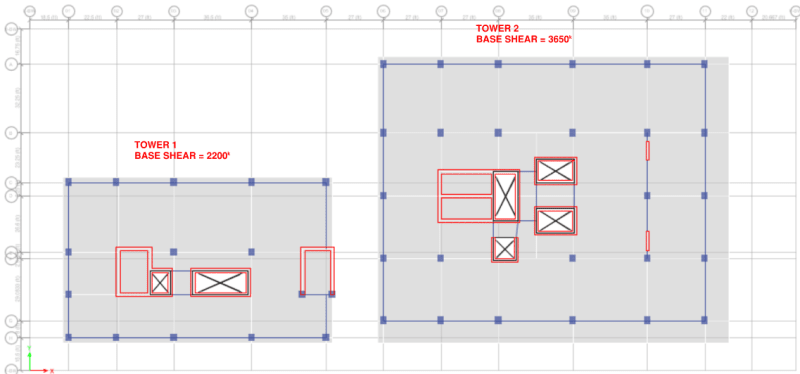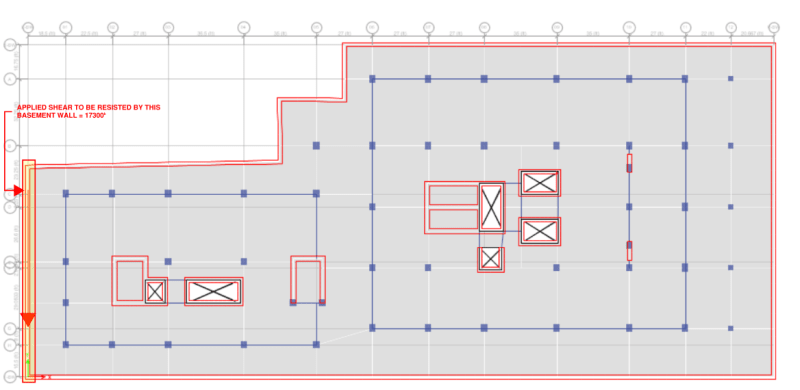Hi there,
I have this habit of going through ETABS models of buildings being designed in our office to understand the behavior of structures. So I was just going through this multi-tower model with initial framing and parameters as per instructions and submitted it to my senior who'll carry out the design.
I have been trying to understand the behavior of shear walls, loss of stiffness due to cracking, and how cumulative story shear (Base shear) is distributed at podium level and is further attracted by basement walls. Previously, @Kootk helped me out by introducing the idea of coupling beams and that piqued my interest to improve my understanding.
Multi-towers with common podium


What I am currently struggling with is very high seismic base shear demands in basement walls. What my understanding in this regard is that total base shear V = 2200(tower 1) + 3650(tower 2) = 5850kips is to be resisted at the podium level and basement periphery walls will act as absorbers and attract most of this shear demand. But when I consider the pier design for the left basement wall as shown in the figure attached, applied shear is way too high. One thing which comes to mind is the 5% eccentricity considered in the design to account for accidental torsional eccentricity. But still, 17500kips shear on a basement wall seems way too much.

It would be great if someone can help me understand why it is happening this way.
BSc. Graduate
I have this habit of going through ETABS models of buildings being designed in our office to understand the behavior of structures. So I was just going through this multi-tower model with initial framing and parameters as per instructions and submitted it to my senior who'll carry out the design.
I have been trying to understand the behavior of shear walls, loss of stiffness due to cracking, and how cumulative story shear (Base shear) is distributed at podium level and is further attracted by basement walls. Previously, @Kootk helped me out by introducing the idea of coupling beams and that piqued my interest to improve my understanding.
Multi-towers with common podium


What I am currently struggling with is very high seismic base shear demands in basement walls. What my understanding in this regard is that total base shear V = 2200(tower 1) + 3650(tower 2) = 5850kips is to be resisted at the podium level and basement periphery walls will act as absorbers and attract most of this shear demand. But when I consider the pier design for the left basement wall as shown in the figure attached, applied shear is way too high. One thing which comes to mind is the 5% eccentricity considered in the design to account for accidental torsional eccentricity. But still, 17500kips shear on a basement wall seems way too much.

It would be great if someone can help me understand why it is happening this way.
BSc. Graduate
